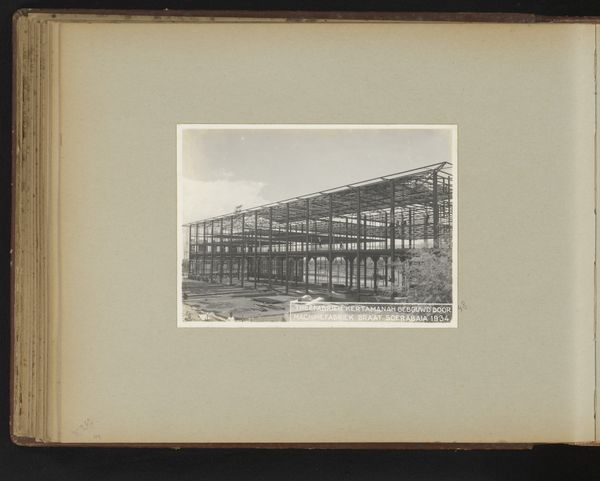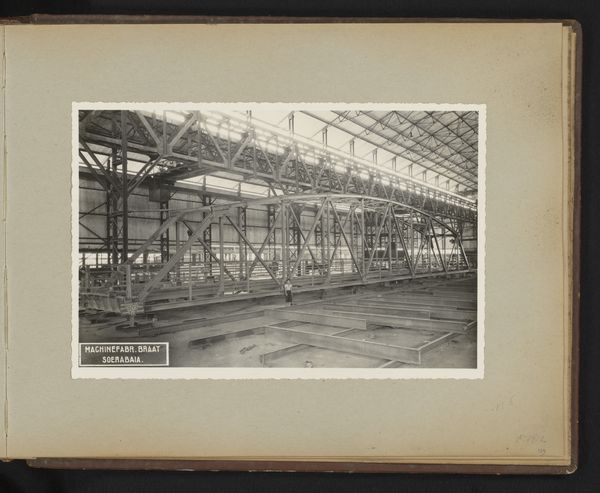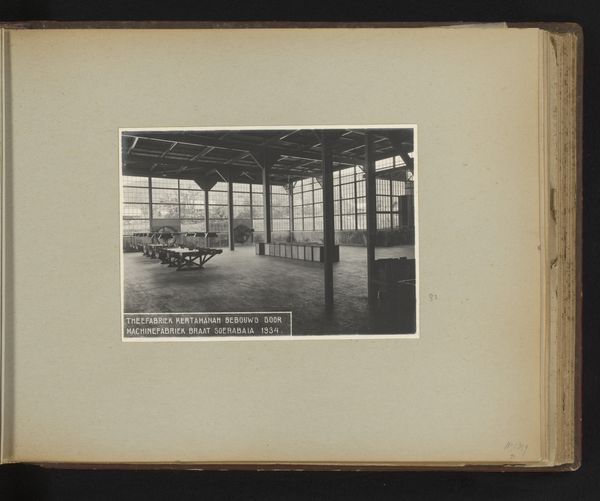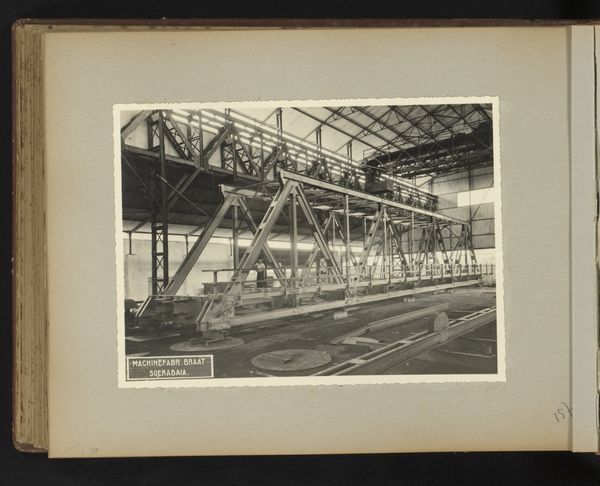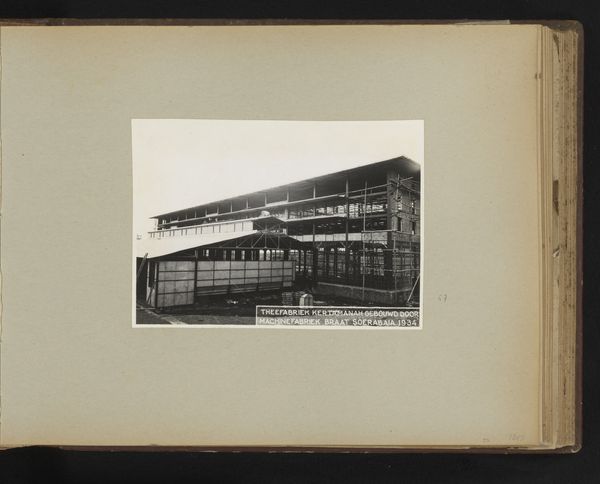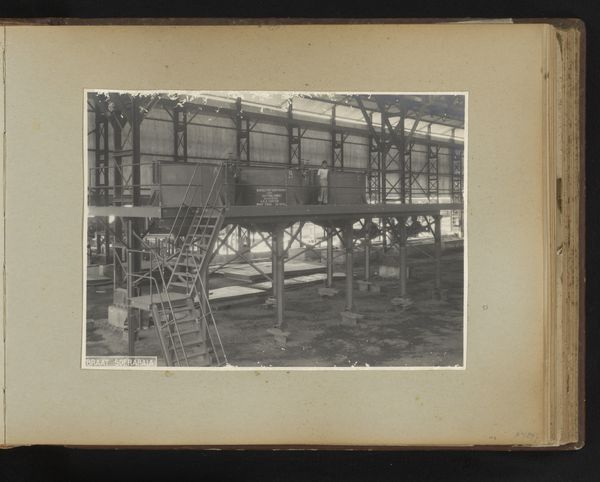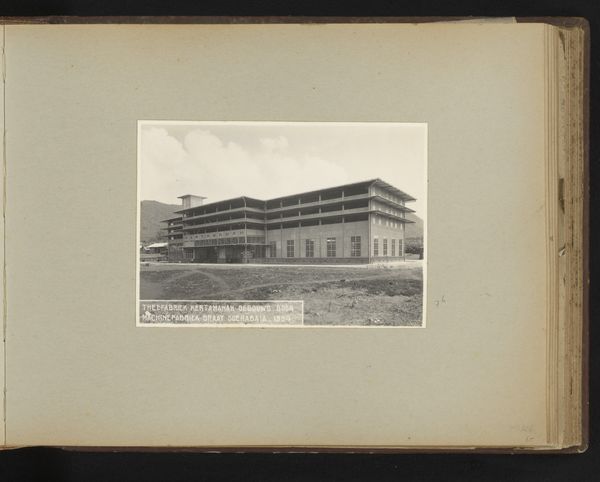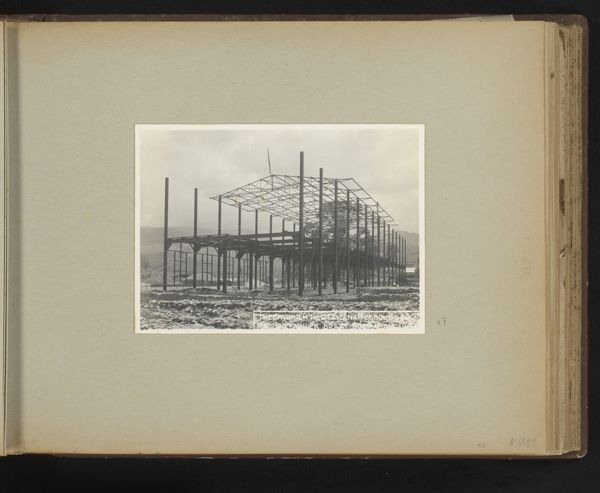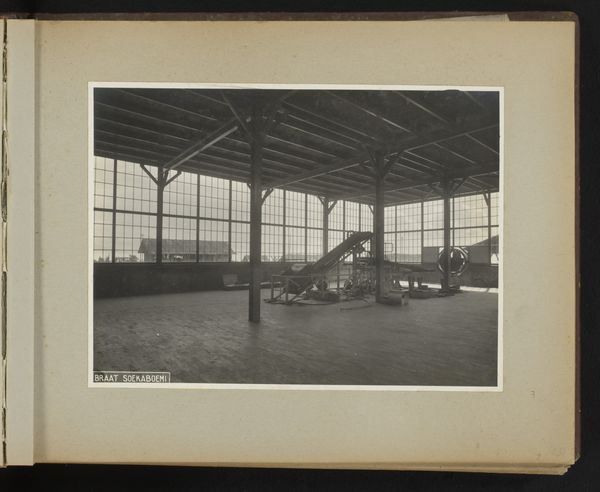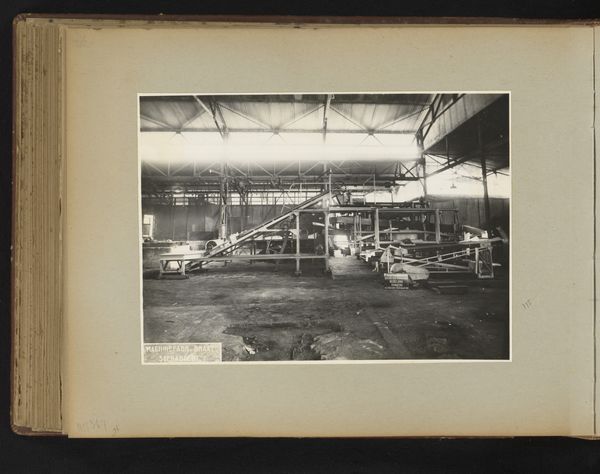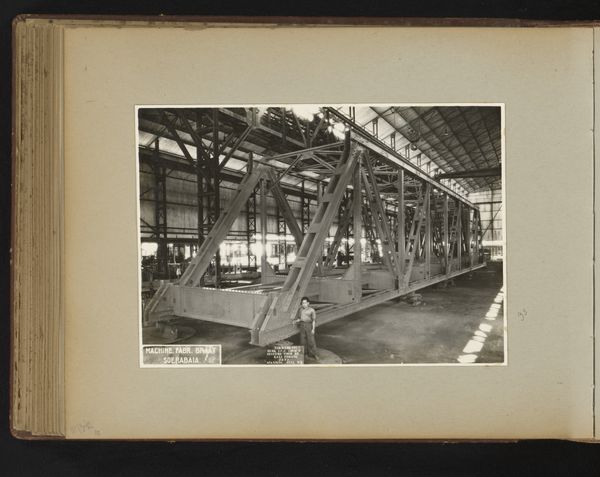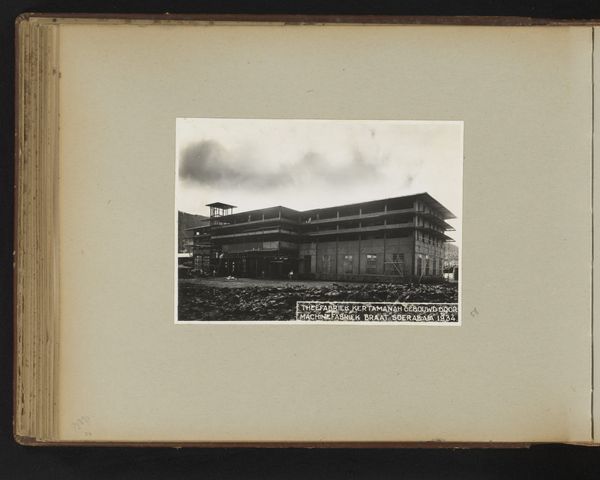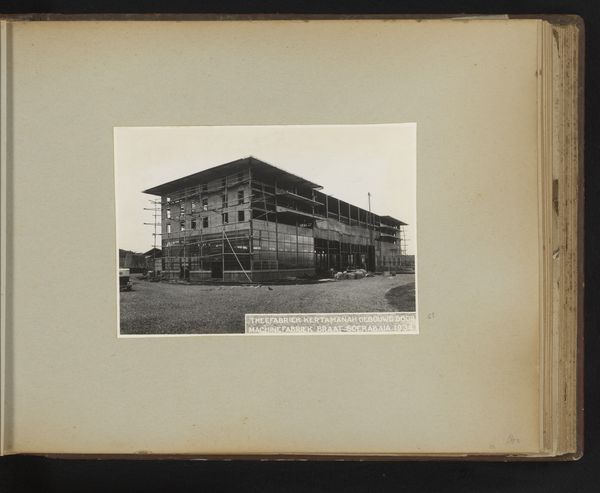
Theefabriek Kertamanah gebouwd door Machinefabriek Braat Soerabaia 1934 1934
0:00
0:00
print, photography, architecture
# print
#
photography
#
geometric
#
cityscape
#
modernism
#
architecture
Dimensions: height 124 mm, width 175 mm, height 250 mm, width 320 mm
Copyright: Rijks Museum: Open Domain
Editor: Here we have a print from 1934, titled "Theefabriek Kertamanah gebouwd door Machinefabriek Braat Soerabaia 1934". It seems to be a photographic record of a tea factory under construction. The stark, geometric structure against the sky really catches the eye. What do you see in this piece, looking at it through the lens of history? Curator: This photograph offers a fascinating glimpse into the confluence of colonialism, industrialization, and modernism in Indonesia. Machinefabriek Braat, the builders, were likely a Dutch company operating in the Dutch East Indies. What story does this tell about the power dynamics inherent in such a project? Who benefitted, and at what cost? Editor: I see that point; it’s a very top-down image, literally! Were these kinds of modern factories seen as symbols of progress then, or as impositions? Curator: It's both, isn't it? For colonial powers, these structures represented modernization and economic exploitation, displaying the reach and power of industrial Europe. For the local population, it meant different things – employment perhaps, but also dispossession, and a changing social order imposed by outside forces. Consider how photography itself played a role in promoting this narrative of progress and control. Editor: So the image functions as propaganda of sorts, showcasing the industrial strength while obscuring the social implications? Curator: Precisely. And what isn't shown is as important as what is. We see the factory, but not the workers' living conditions, not the cultural impact on the surrounding communities, nor who ultimately controls the means of production and the profits derived from the tea itself. It prompts us to think about the act of documentation itself. Editor: That really shifts my perspective. I initially saw an interesting architectural image, but now I see the weight of history and power structures embedded within it. Thanks for helping unpack that! Curator: And I’m reminded of how even seemingly objective architectural records are imbued with political and social meaning. Looking critically at who produces images, and for what purpose, is crucial.
Comments
No comments
Be the first to comment and join the conversation on the ultimate creative platform.
